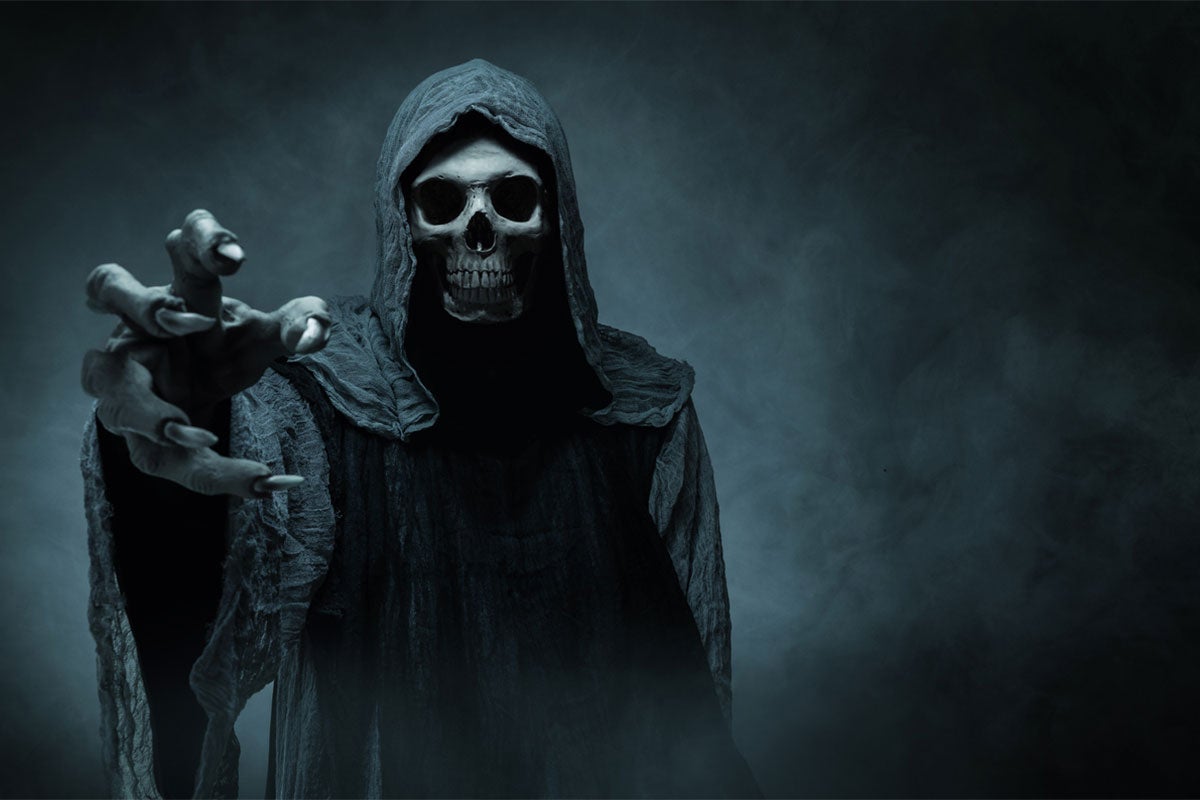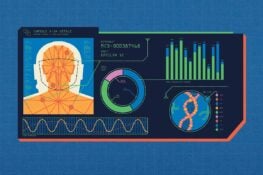Class name: HUM 2020: Encountering the Humanities
Theme: Monsters and Mad Scientists
Instructor and creator: Stacy DiLiberto, lecturer of Humanities and Cultural Studies in the Department of Philosophy.
When the class is offered: Every semester
Number of students in a class: Class section sizes have ranged from 45 to 300
Prerequisites: None, HUM 2020 is a part of the cultural and historical foundations requirement within the General Education Program (GEP).
From the Instructor
Stacey DiLiberto, College of Arts and Humanities
How would you describe the theme of your course?
The “Monsters and Mad Scientists” theme allows for an interdisciplinary study of the humanities, specifically how science has influenced the humanities and vice versa. We explore these connections by studying various monsters and manifestations of monstrosity throughout world societies.
Since HUM 2020 is an introductory humanities course, we cover various types of humanistic disciplines and cultural productions such as literature, film, art, myth, music and philosophy from various periods in history (ancient to contemporary). Monsters are a great case study for all these approaches since they’ve existed throughout human history in various forms and they often reflect our anxieties about ourselves, the natural world and science.
Describe your thought process behind creating this course. What inspired you to explore both science and the humanities together?
When designing classes, I try to imagine what students might like to learn about. I think about what I would want to learn about if I were a student again now, too! I taught a variation of this course at a previous institution, but it was limited, and I knew that I wanted to expand what I already had into a fully developed class. UCF students seemed like a great audience for what I wanted to do, especially since a majority of them are non-humanities majors.
HUM 2020 is a course that offers a lot of flexibility. I’d say no two courses are the same — my colleagues and I approach it differently, which is great. I thought, “If this is a GEP course (it’s required), there will be reluctant students; students who question, ‘Why do I have to take this, especially if I’m a STEM major?’ How, then, can I best reach those students and maybe, just maybe, show them that the humanities are ‘cool’ and relevant to their studies by making that science-humanities connection?” It’s not either, or: science or humanities. The two are connected.
An interdisciplinary course that centers around monsters seemed to, therefore, become appealing. These are subjects I enjoy and feel comfortable teaching and will give me the ability to draw from all sorts of humanities topics and contemporary culture. Plus, who doesn’t want to talk about monsters?
How can students benefit from this course in their future classes or careers?
The skills that students learn in the humanities — to think critically and creatively, to develop cultural literacy, to build empathy for others and their experiences, to look within and outside of themselves — are skills that are useful in any career. For instance, ethics are an important component to medicine or business, and the humanities can help instill that.
What does the coursework entail and what is unique about it?
In every module, we examine a different type of monster, their purpose and function in history and culture, and we make conclusions on what they represent. We start out with monsters from ancient myth and then move to more “popular” monsters such as Frankenstein’s Creature, vampires (including Dracula), and zombies, to more contemporary monstrous representations like Godzilla and artificial intelligence (AI). As a result, we do somewhat of a historical survey of culture, science and humanity.
Depending on the size of the class, assignments range from traditional tests and quizzes to creative projects and presentations. In all sections, we discuss and write about topics in new and interesting ways.
Why is the theme of this course especially important for today and the future?
By the end of the semester, students realize that monsters are representations of our faults and our anxieties. By the last unit, it’s difficult to distinguish between monsters and humans: we can be monsters, too. So, with that lesson, we end with how NOT to be monstrous: how can we do better and be better? That lesson is important today and in the future.
Variations of the same monsters, like vampires or zombies, feature in cultures across time and space and continue to endure in modern popular culture. What do you think this says about human nature?
We humans are always looking for ways to explain ourselves and the world, and to make sense of it all. Monsters have always helped us do that. We find that monsters reflect our fears and anxieties at any given time. Whether it is monsters such as Frankenstein’s Creature to keep us from going too far with science, or zombies reflecting our loss of individuality and even societal collapse, monsters help us exorcise our fears and find meaning.
Who is your favorite science fiction monster and why?
I like so many monsters for different reasons (hence the class), but I always come back to Frankenstein’s Creature. He is such a sympathetic monster. I love Mary Shelley and her work; it’s one of my all-time favorite books to read and teach, and it’s a core part of the class. I learn something new from it every semester, and I always love when students realize that the Creature is not the grunting hulk of a monster we see in the classic Hollywood film, but a thinking, feeling, misunderstood creation created by an individual whose downfall is hubris. Knowing Shelley’s backstory makes me appreciate him even more.
From a Student
Aniqa Sikder ’22, health sciences alum with a pre-clinical track
Why did you decide to take this course?
I decided to take HUM2020 because as a pre-medical student, I had never gotten the chance to learn about philosophy and ancient history at the college level.
What do you think is the most challenging aspect of the course?
I initially had a difficult time with historical text analysis, but as I progressed through the course, I improved my critical thinking skills and found myself wanting to learn more about the humanities.
What have you enjoyed most about the course?
I really enjoyed learning about monsters and how they can teach us so much about human nature. This interdisciplinary course has allowed me to truly understand the strong relationship between science and the humanities.





